The Story of the Legendary RUF Yellow Bird, From the Man Who First Told It
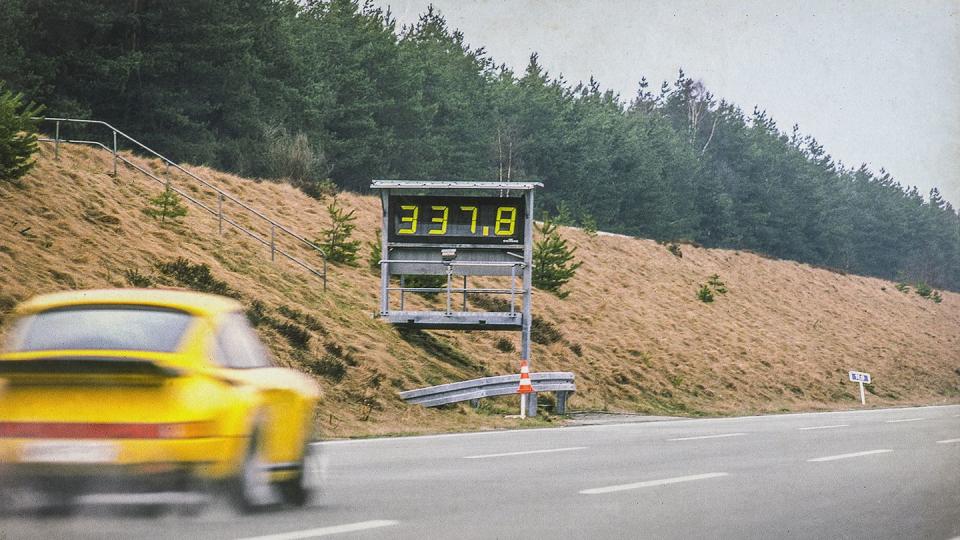
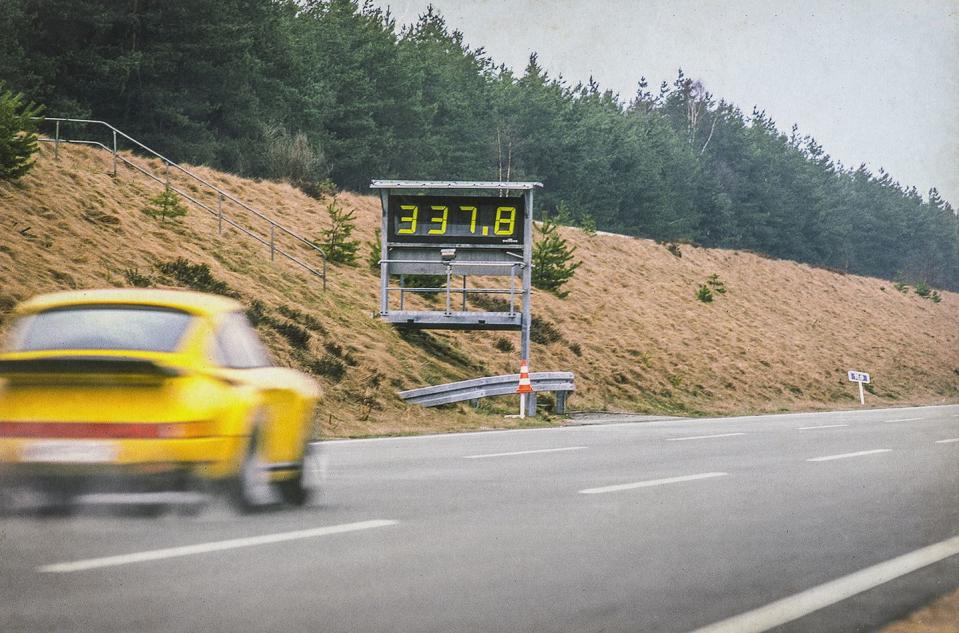
There’s nothing quite like the whoop of a few 12-cylinder engines outside your hotel room at night to suggest you might not be in Kansas anymore. Or even California. Especially when you hear distant artillery fire mixed with the occasional bark of a highly tuned Porsche flat-six.
This story originally appeared in Volume 22 of Road & Track.
In April 1987, about half the Road & Track editorial staff boarded a plane in sunny Los Angeles and took off for West Germany, which was still in the grips of a damp and chilly spring. Former Formula 1 champion Phil Hill went with us. We were headed for Volkswagen’s sprawling Ehra-Lessien test track near Wolfsburg to do a “World’s Fastest Cars” shootout for our July issue.
Yes, there was still a West Germany then. The Cold War had thawed slightly, but East Germans were regularly being gunned down by their own border guards for trying to escape to the West. It seemed nobody was trying to go the other direction—especially car buffs.
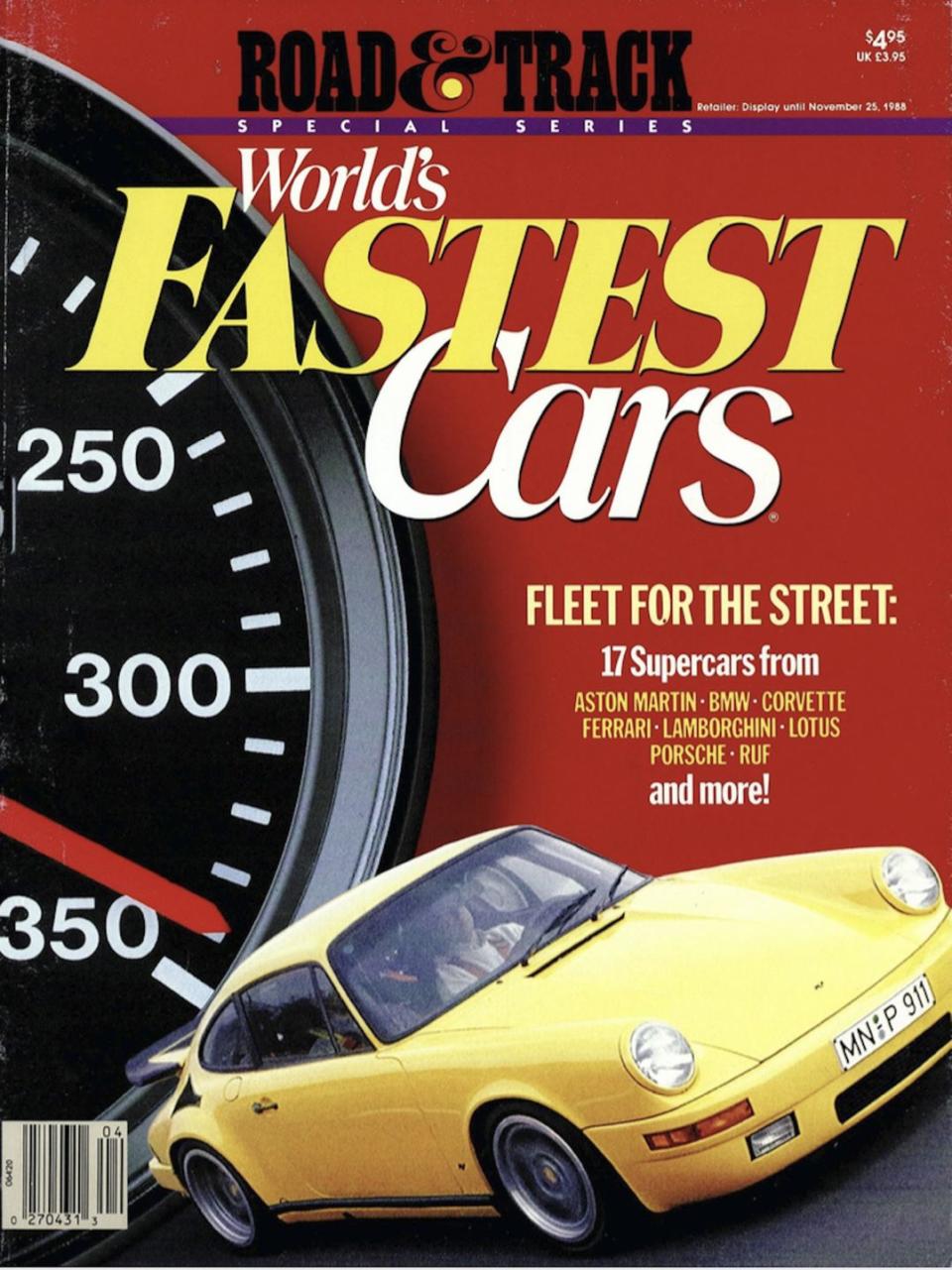
The Volkswagen test track was in the virtual shadow of the Iron Curtain, located only a few miles from the border. We were told Volkswagen had chosen this site because it was in a no-fly zone and, therefore, safe from the prying eyes of aerial photographers. No risk of having a spy shot of your experimental new Dasher hatchback or Rabbit Diesel suddenly appear on the cover of a car magazine.
That first evening in Germany, we checked into a charming country hotel called the Alte Mühle, not far from the track. We were joined at dinner by our European editor, Paul Frère, another former F1 pilot and Le Mans winner, who’d lined up most of the exotic cars for this big adventure. He and Hill would be doing all the high-speed test-driving.
And Ehra-Lessien’s Schnellbahn was certainly the right place for that. We’d done a World’s Fastest Cars story here in 1984 and found the 15.5-mile circuit to be about the only place on earth where you could safely peg the tach needle on a highly tuned supercar—in top gear—and leave it there more or less indefinitely.
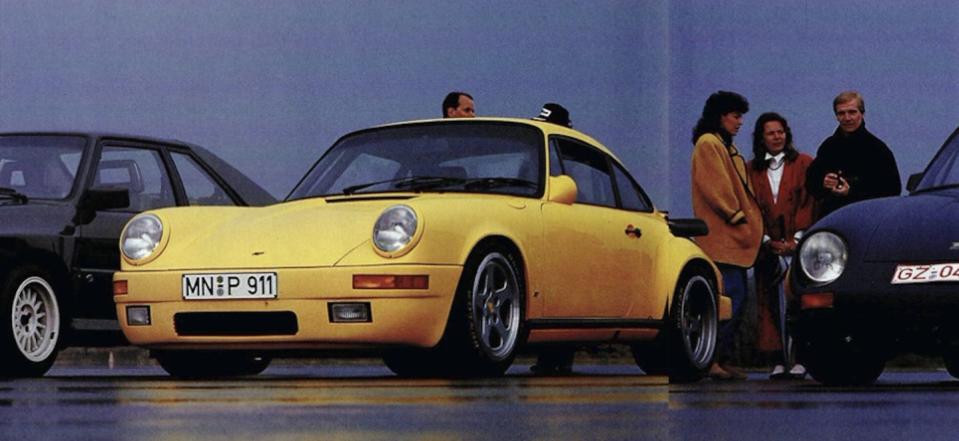
The track was an elongated and misshapen oval with the sides pinched together, so the center of the circuit was more a median than an infield. The two seven-mile straightaways flared outward into soup-bowl turns at either end, their steep banking designed to produce no lateral g-loading up to a speed of 125 mph, something most of us had experienced only in aerobatic planes. It was said that if you stood at the end of one straightaway, you couldn’t see the other end because the track disappeared over the curvature of the earth. The local topography may have had some influence, but the theory was quite plausible. Seven miles is a long way to the next corner on any circuit.
Our last test cars arrived that first night, and we opened our curtains in the morning to find a line of very sleek and exotic automobiles on the pavement below, all tinged with a light coating of frost. It looked like Christmas morning for the world’s wealthiest car buff.
We had on display two red Ferraris, a GTO and a Testarossa; a pair of Porsche 959s; a red Lamborghini Countach; a silver custom-built Isdera Imperator powered by a Mercedes-AMG V-8; an AMG Hammer, which was a highly modified Mercedes 300E that R&T had billed as “the hottest passenger sedan in history”; a purple and blue pair of Koenig/RS Turbo Porsches; and a bright raincoat-yellow RUF Twin-Turbo, based on a Porsche 911 Carrera chassis.
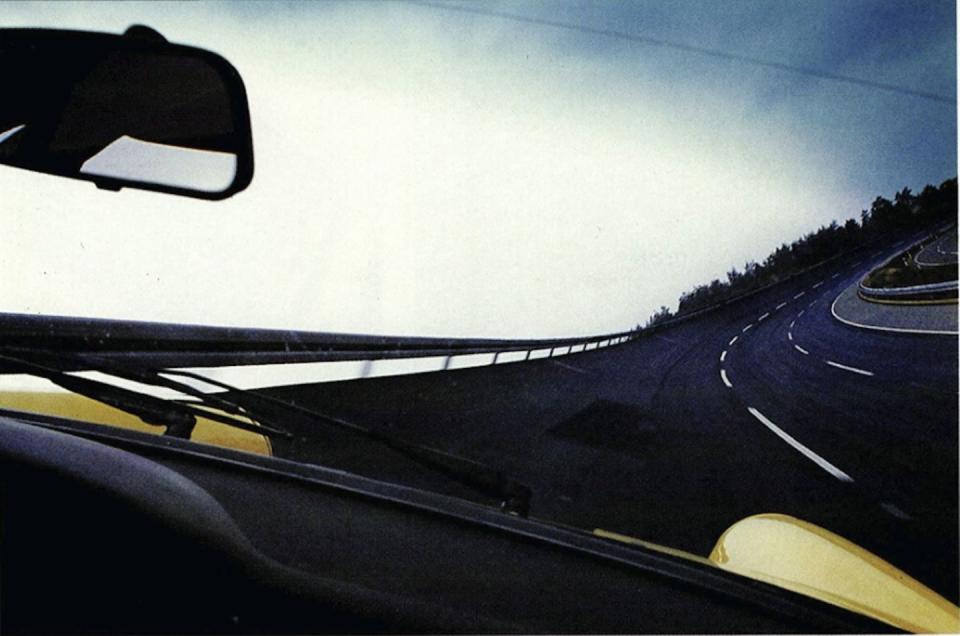
Yes, our old friend Alois Ruf was back with another hand-built car from his small shop in Pfaffenhausen, Bavaria. He’d won our World’s Fastest Cars contest in 1984 with a much-modified Porsche 911 Turbo featuring his own 3.4-liter engine and five-speed transmission (in place of the factory four-speed). The car clocked a speed of 186.2 mph—exactly 10 mph faster than the second-place finisher, a Ferrari BB512.
But the ante had been raised over the past three years, and this time, Ruf returned with a new twin-turbo 3.4-liter engine in a 911 Carrera chassis, the car’s custom aluminum bodywork trimmed of all aerodynamic excess: a smooth front air dam, small side mirrors, and no rain gutters above the doors. Next to the other cars in the parking lot, it looked almost modest, close to a stock 911. A sleeper that would turn out to be very much awake.
Under a dark and threatening sky, photographer John Lamm led all the cars on a short drive to the track, and by the time we arrived it was pouring rain. We took shelter in a large barn at the edge of an immense expanse of blacktop that VW used for testing cars. While we waited out the rain, we could hear the distant sound of artillery and automatic weapons firing in the east, no doubt from war games of some kind. Either that or World War III had broken out.
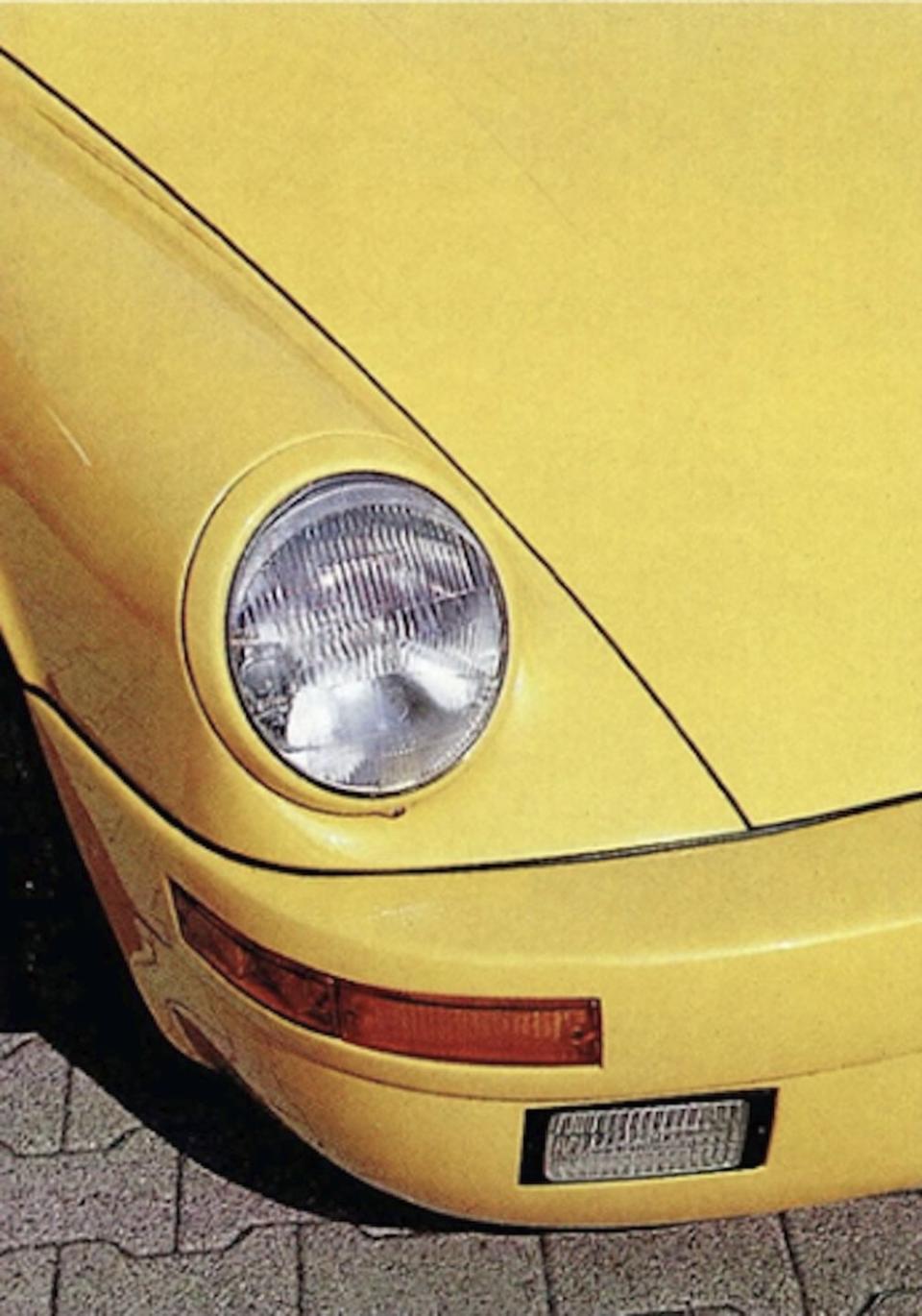
But all gunfire ceased, the sky cleared by late morning, and soon Hill and Frère were doing ever-faster laps on the damp track, howling down the front straight at speeds usually associated with Indy or Bonneville. Frère sped by in the Lamborghini, leaving us standing in a damp shock wave of sound and fury, then disappeared in a roostertail of atomized rain. He pulled in a few minutes later, having turned a 173-mph lap. He said the track was drying, so the testing began. Our assistant engineering editor, Kim Reynolds, got out his timing equipment and fifth wheel and set up a drag strip to get quarter-mile and 0–60 times while Hill and Frère hit the Schnellbahn.
The afternoon shrieked on, and soon, two cars had beaten the old 186.2-mph record. The Porsche 959 hit 198 mph, and the Koenig/RS bested it by breaking the 200-mph barrier—by 1 mph.
Then Frère invited me to ride with him in the yellow RUf Twin-Turbo, nicknamed the “Yellow Bird” by Richard Baron, the art director at our R&T Specials division.
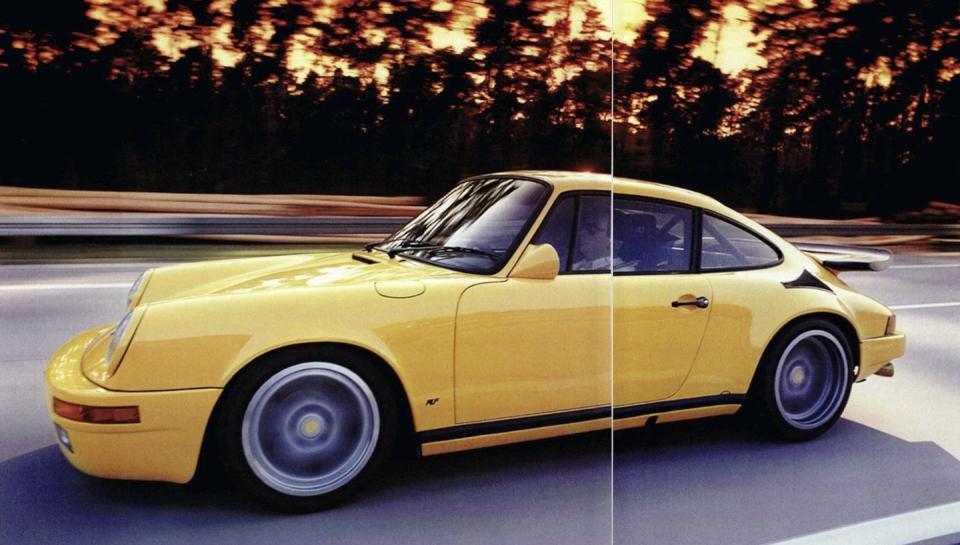
I’d ridden with Hill and Frère all day, alternating cars and taking notes, but I was unprepared for the RUF’s acceleration, even after rides in the Testarossa and Countach. As we howled onto the circuit, the car went slightly sideways with each upshift and then straightened out for an explosive burst of speed to the next gear. As Frère hit fifth gear, we tripped the timing lights at 311.9 km/h (194 mph), still accelerating. The car was eerily smooth and composed on the banking, and its speed felt almost surreal on the long straights. Trackside guardrails and trees whipped by as if we were being vacuumed into the cosmos. The engine was conservatively rated at 463 hp, but the Ruf also produced 408 lb-ft of torque at 5400 rpm—17 lb-ft more than the next-torquiest car in the test. On our second lap, the lightboard flashed 336.1 km/h (209 mph).
Frère turned to me and shouted, “This is faster than I’ve ever gone in my life!” Quite an admission from a 70-year-old with three class wins and one overall victory at Le Mans. Needless to say, it was faster than I’d ever gone—or have since.
We pulled into the pits, and Ruf asked how fast we’d gone. When we told him, applause broke out in the crowd around the car. The teenage son of one of the Ferrari owners looked through the window at our instrument panel and exclaimed, “Mit radio!” Everyone laughed, but those two words summed up the real-world versatility of the car.
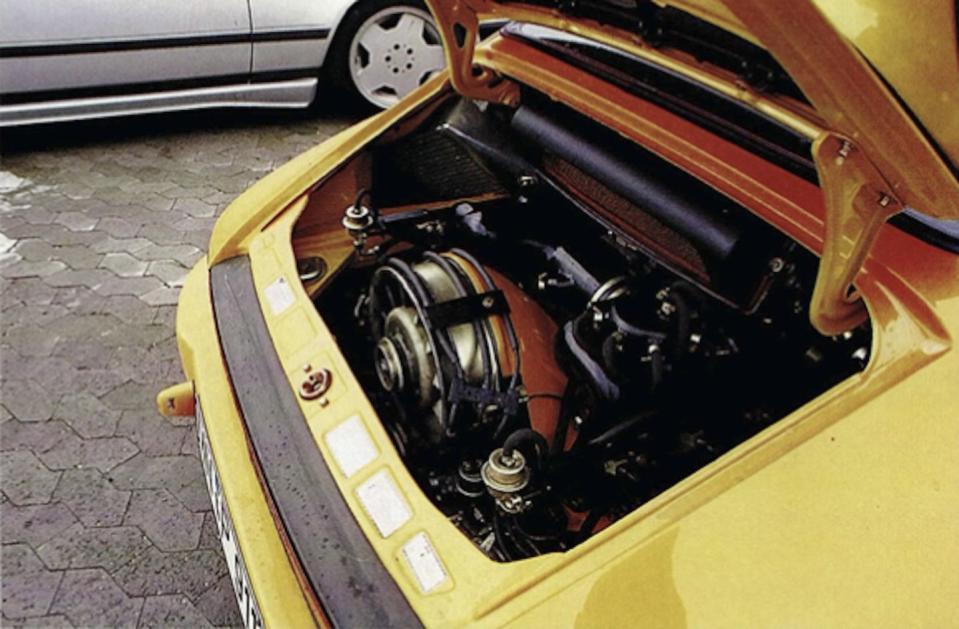
Later in the day, the damp track dried out, and Hill took off with photographer Lamm in the passenger’s seat. He picked up another 2 mph and turned a new record of 339.8 km/h (211 mph). The Ruf had won the contest by 10 mph again.
Chatting in the pits later, Hill and Frère both commented that the Yellow Bird was slightly undergeared and could have gone even faster. Ruf concurred but said, “There’s not much purpose in a road car going very much faster than 300 kilometers per hour.” Good point. I always try to keep it under 180 mph, even on the highway.
Yet what struck all of us about the Yellow Bird was not just its stellar speed but how civilized and “normal” it was as a road car. When we drove back to the hotel that evening, it ran fine and idled smoothly at stoplights, even after a hard day of record runs and drag-strip testing. Our test pilots judged the RUF to be dead stable and fine handling at speed, as well as a refined model of restraint in daily traffic—despite its 4.0-second 0–60 time and 11.7-second quarter-mile at 133.5 mph.
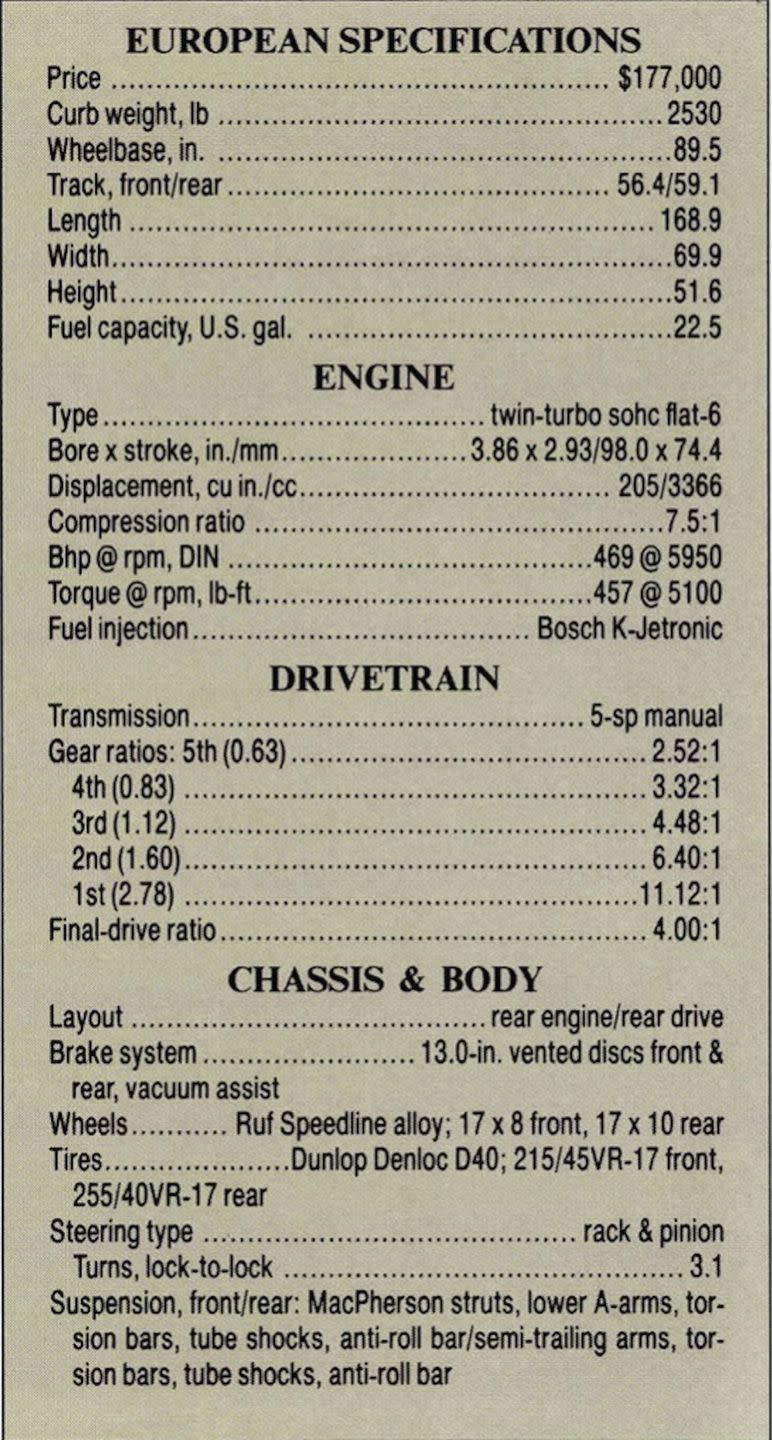
Ruf built 29 more of these CTR models—a great commuter car, perhaps, for those with $143,000 to spend in 1987. They seem to be trading hands for substantially more than that now, so they’ve proved to be a good hedge against inflation.
We didn’t test fuel economy at Ehra-Lessien, but it probably would have been better in town than on the Schnellbahn.

A car-lover’s community for ultimate access & unrivaled experiences.JOIN NOW Hearst Owned
You Might Also Like

 Yahoo Autos
Yahoo Autos 